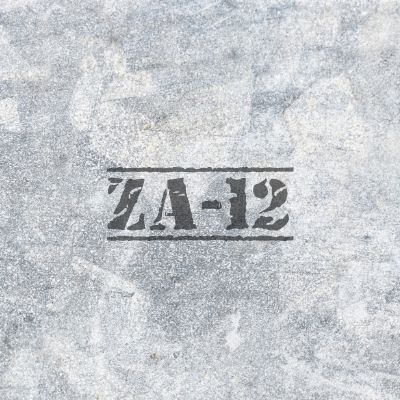Zinc Die Cast PROCESS
Zinc die casting is prized for being one of the most efficient and economical methods to produce industrial parts. Die-cast zinc parts are both strong and dimensionally stable, making it a popular material choice for a variety of applications.
ZINC die Cast capabilities
Redstone Manufacturing’s zinc die casting process creates parts for both small and large production runs. We pride ourselves in helping organizations optimize costs, and providing consistent, high-quality zinc die-cast parts. Our zinc casting services are facilitated through our three facilities in China, Mexico, India, Taiwan, and Brazil. Our headquarters in the United States have an expert staff who can guide you from concept to a fully assembled zinc component.
What makes Zinc an excellent choice for die casting?
Pound for pound, zinc is easier to work with, offers greater metallurgical properties, and is often cheaper than most non-ferrous die-cast metals. Its primary benefits include:
- Strong metal with excellent hardness.
- Creates parts with high dimensional stability and high accuracy.
- Low material cost compared with other alloys.
- Thermally & electrically conductive.
- Thin wall capacity.
- Corrosion-resistant properties.
- Recyclable material.
- Easy to machine (if any is required), which means lower secondary machining costs.
Zinc Die Cast
Industry Applications
- Automotive: Used in break, fuel, power steering, and air conditioning systems, as well as interior aesthetic parts.
- Building & Architectural: Used to make claddings, rainwater systems, and roofing.
- Performance shielding: Protect devices from electromagnetic fields.
- Industrial: Create bearing parts, forming dies, and machine parts.
2 Categories of Alloys Used In Zinc Die Casts
There are two families of zinc alloys to choose from in your zinc die casting production.
First, ZAMAK alloys. The name is an acronym for this alloy’s composition (in German), which is zinc, aluminum, magnesium, and kupfer (copper). ZAMAK alloys, as the name suggests, belong to the zinc-aluminum alloy family and contain a constant 4% aluminum. Finishing techniques available for these alloys are electroplating, wet painting, and chromate conversion coating. The following alloys are available for zinc diecast services:

Zinc Alloy 2
(Zamak 2)
Alloy 2: Also known as Zamak 2, it has the highest composition of copper, specifically, 3% more than Alloy 3. This extra copper provides additional strength, but it comes at a higher cost per unit, and you sacrifice part durability. Zamak 2 alloy has excellent creep making it easy to cast for use in metal forming dies and industrial applications.

Zinc Alloy 3
(Zamak 3)
Alloy 3: Zamak 3 is 96% zin and 4% and is the most versatile of the four alloys. Its popularity comes from the combination of ductility, impact strength, and overall strength. Zamak 3 has excellent castability, long term dimensional stability, and several plating options.

Zinc Alloy 5
(Zamak 5)
Alloy 5: With just 1% more copper than alloy 3, Zamak 5 benefits from a 10% increase in strength while also gaining extra corrosion resistance and hardness. This added copper reduces overall ductility and dimensional accuracy.

Zinc Alloy 7
(Zamak 7)
Alloy 7: Zamak 7 is the King of ductility. With less magnesium than the other alloys, it has increased fluidity, which makes it excellent for thin-walled cast parts. Zamak 7 alloy is ideal for producing more intricate and complex components.
Next, ZA alloys. These have higher aluminum content than conventional cast alloys, with the number following the hyphen denoting the percent of aluminum within the alloy. ZA alloys are mainly zinc and aluminum but also contain some magnesium and copper. These alloys have high strength, low energy requirements, and excellent bearing properties.

ZA-8
Zinc Alloy
Of the three ZA alloys, ZA-8 has the highest density and lowest aluminum content of only 8.4% and only 1% copper. It is the only ZA alloy that can be hot chamber die cast and has the highest creep strength of the zinc alloys.

ZA-12
Zinc Alloy
ZA-12 has 11% aluminum and 1% copper, it’s metallurgic properties fall between the two ZA alloys. ZA-12 combines overall performance with ease of fabrication.

ZA-27
Zinc Alloy
This alloy has the highest aluminum and copper content sitting at 27% and 2.25, respectively. ZA-27 has the highest strength (three times stronger than cast aluminum) and the lowest density of the three making it ideal for applications that require strength and wear resistance.
ADVANTAGES OF ZINC DIE CAST
- Production rates are faster with zinc vs. magnesium or aluminum.
- Closer tolerances than any other metals. Achieve +/- 0.001 with small components.
- Zinc die cast products are net shape and do not require secondary machining. Only aluminum can achieve net shape of all other die cast metals.
- Zinc components can last up to five times longer than aluminum counterparts.
companies using our Zinc Die Cast Solutions:






Get updates from Redstone Manufacturing
Learn more about our metal manufacturing company
Changed from Brochure to Newsletter on 8/12/24


